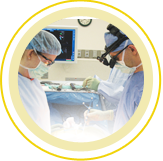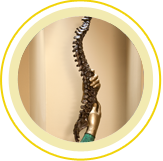Frequently referred to as a pinched nerve in your spinal column, radiculopathy can strike in your cervical or neck area, your lumbar region or lower back area, or your thoracic area or mid back region. It causes a number of uncomfortable symptoms, so a diagnosis is imperative to receive the proper treatment. Radiculopathy diagnosis? What you should know.
What is Radiculopathy?
Radiculopathy is an injury or damage to a nerve root in your spine. It can also be known as radiculitis. This pinched nerve happens when one of your nerve roots is compressed or irritated. It will cause the areas around your pinched nerve to be painful, numb, weak, or tingly.

Radicular pain radiates from the point of injury to the areas served by that particular nerve.
Typical Symptoms of Radiculopathy
In general, typical symptoms include:
- tingling or numbness in fingers or hand
- weakness in your shoulder, arm, or hands
- decreased motor skills
- loss of sensation
- pain associated with neck movement
Lumbar radiculopathy is the most common form of radiculopathy, and the pain starts in the lower back, down the buttock and down the back of the leg. This is also known as sciatica.
Thoracic radiculopathy in the upper or mid-back area causes pain that starts in the upper and mid back and may move around to the chest. This is very rare.
Cervical radiculopathy in the neck can cause pain, weakness, or numbness in the shoulder and/or arm.
What Causes Radiculopathy?
Tissues that surround the nerve roots in our spine can become compressed or irritated. The tissues include the bones of the vertebrae, the discs, and tendons. If any of these parts change in size or simply shift, the space between them can become more narrow. These openings are called foramina and this change is referred to as foraminal stenosis, very much like spinal stenosis of the spinal cord.
This happens due to degeneration of your spine as you age or from an injury.
Some specific causes include:
- A herniated or bulging disc. Discs are cushions between the vertebrae. They can slip out of place, get damaged, or press on nerves.
- Bone spurs. Bone spurs are areas of extra bone that form due to inflammation from osteoarthritis or trauma.
- Ossification. Thickening or ossification of spinal ligaments can cause narrowing of nerve roots leading to compression.
Diagnosis of Radiculopathy
It is important to get a clear diagnosis from a specialist like Spine & Scoliosis Specialists in High Point and Greensboro, NC as soon as symptoms appear.
Step one is a careful physical exam and review of your medical history. The physician will examine your neck, shoulders, arms and hands. In addition, they will check for any numbness or loss of feeling, your muscle reflexes, your muscle strength, and your posture or the way your spine curves.
Next you may have a series of imaging tests starting with X-rays which can show any narrowing or changing alignment of your spinal cord as well as fractures.
A CT scan will show 3D images and more details. An MRI will show if damage to soft tissues is causing the nerve compression and if there is damage to the spinal cord.
An electromyography, or EMG, measures the electrical impulses in your muscles. This will tell your physician if your symptoms are due to pressure on the spinal cord, or if another condition like diabetes has damaged your nerves.
Some Good News
With some changes to your posture, over-the-counter meds and prescription muscle relaxers, physical therapy, and injections in your spine, radiculopathy may improve rather quickly. Although it’s rare, surgery can be recommended with severe symptoms.
Don’t wait to seek medical care.
Contact Spine & Scoliosis Specialists at 336.333.6306 if you are having any of the above symptoms of radiculopathy. The sooner you get a diagnosis, treatment and pain relief can begin.



